Technologies
Pixel 7A vs. Galaxy A54, Pixel 6A: Which Should You Buy?
These three phones are cheap and offer great all-round performance. But which one is worth your money?
Buying an affordable phone doesn’t mean suffering with nasty design and slow, frustrating hardware. These days you can get a phone that looks and acts almost like a flagship, and still have a bunch of cash left in your pocket. Google’s latest entry-level phone, the Pixel 7A, packs an amazing lineup of specs, at a very attractive price. Yet the older Pixel 6A remains on sale for even less and is a great option for people on a tighter budget.
Meanwhile, Samsung has a solid value offering in the form of the Galaxy A54 5G, which ticks all your everyday, essential boxes and can frequently be found on sale at an extremely competitive price.
But which of these phones should you buy to make the best use of your money? I put the three side by side to help you choose.
Advertiser Disclosure
Price
As the most recent phone, it’s no surprise that the Pixel 7A is the most expensive, costing $499 directly from Google. It technically replaces the Pixel 6A, though both phones are on the market. The 6A has now been reduced to only $349, and it’s been seen for even less with store discounts.

The Galaxy A54 runs Android 13 at its core, with four years of Android generation updates promised by Samsung.
Samsung sells the Galaxy A54 5G for $449 — slightly undercutting the Pixel 7A but costing a full $100 more than the Pixel 6A. Since its launch in March, though, we’ve seen it discounted further ($375 on BestBuy at the time of writing), so it’s always worth shopping around and seeing if you can save a few more bucks.
Display size, quality
At 6.4 inches, the Galaxy A54’s display is larger than the 6.1-inch displays of both the Pixel 6A and 7A. During general use, we also found that it appeared brighter, making it easier to read outdoors under sunshine. Though its resolution is marginally higher than that of the Pixel 7A, side by side there’s no noticeable difference in terms of sharpness.
The Pixel 6A has a standard screen refresh rate of 60Hz, and the 7A ups that to 90Hz. Frankly, it isn’t something you’d really notice during everyday use. The Galaxy A54 takes that further, providing «up to» 120Hz. Using both phones side by side and scrolling through menus simultaneously, I couldn’t see much difference. Maybe the more keen-eyed among you could, but even so, it shouldn’t be a reason to consider one over the other.
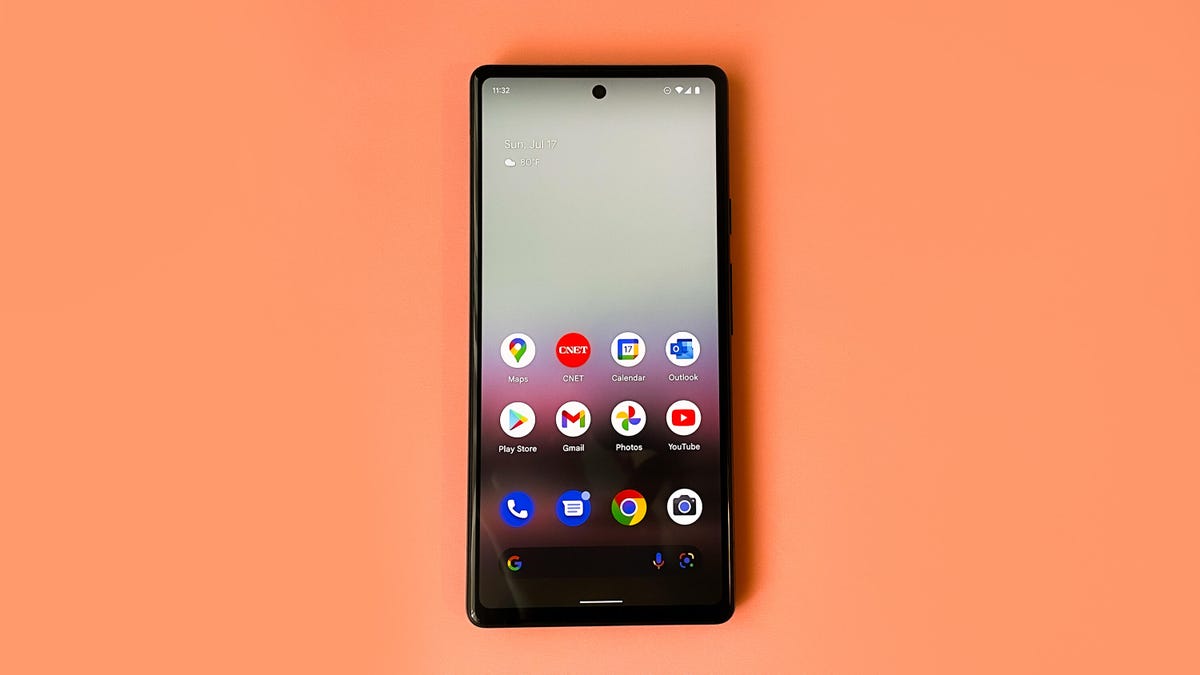
The Pixel 6A’s display is smaller than the Galaxy A54’s and appears less bright.
Processor performance
With its more recent Tensor G2 chip, you might expect the Pixel 7A to be the more powerful model, but on benchmark tests, it actually falls just behind the 6A. It’s a marginal difference, though, and during everyday use it isn’t something you’d ever notice. Both phones are swift, with smooth navigation, fast-loading apps, and gaming that’s handled perfectly well.
The A54 performed the worst on the tests, with quite disappointing scores on benchmarks, particularly against the more affordable 6A. Still, I found it to be capable of handling all my daily essentials, and it only really seemed to slow down when I was playing more graphically demanding games, like Genshin Impact, at higher quality settings.
Cameras
Both Pixels offer standard and superwide cameras, eschewing the telephoto zoom camera found on the pricier Pixel 7 Pro. The Pixel 7A beats the older 6A with higher resolution sensors, but overall image quality is comparable. Both phones capture shots with great dynamic range, accurate colors and plenty of details.

The Galaxy A54’s main camera adds a lot of saturation to its images.
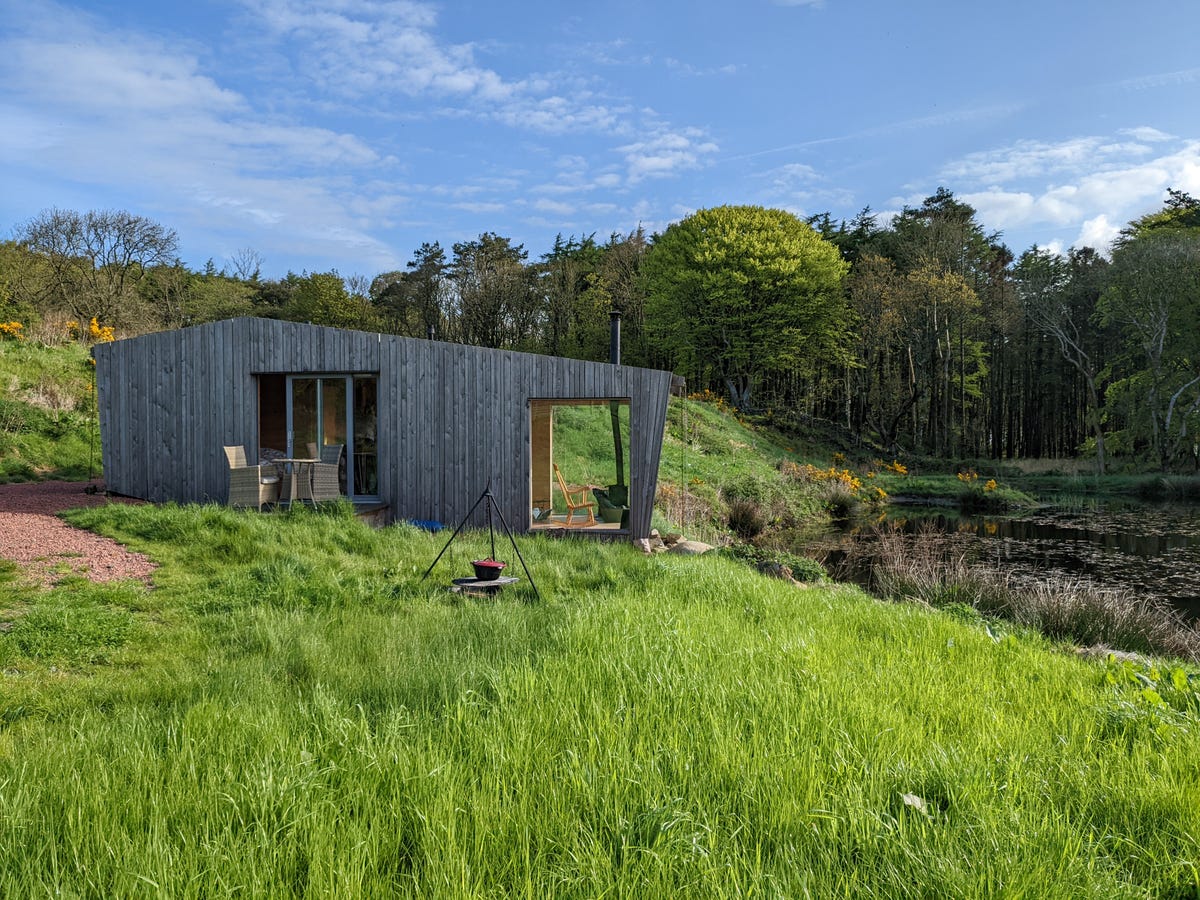
The Pixel 6A’s shot looks much more natural.

The Pixel 7A’s colors are more similar to the 6A’s, but its higher resolution sensor delivers more details.
The Galaxy A54 adds a 5-megapixel macro camera to its main and ultrawide lenses, but beyond the odd novelty close-up shot of a bug, it’s pretty redundant. Its main camera has a generous 50 megapixel resolution, but its images are disappointing compared with both Pixel phones. Colors tend to look unnaturally saturated, with high-contrast skies sometimes resulting in blown-out highlights.
The main lens also tends to produce quite cold-looking images that dramatically shift to warmer tones when you switch to the ultrawide lens. Both Pixels, however, do a good job of maintaining color tones when switching between normal and wide views.

The A54’s main camera sometimes delivers quite cold-looking images.

Switching to the ultrawide lens results in a much warmer image. I prefer this look, but it’s frustrating to see so much color shift between the two cameras, which isn’t as much of an issue on either of the Pixel phones.
While the A54 5G is good for casual snappers just wanting vibrant shots of their kids at the beach, the Pixel 7A is worth a look if photography is more of a priority.
Battery
Though the Galaxy A54 packs a slightly more capacious battery than either of the Pixels, its slightly larger (and therefore more power hungry) display means its overall battery life is roughly on par with its rivals. On my YouTube streaming battery test, it drained slightly faster than the Pixels, but in overall use there’s little difference to worry about.
If you’re careful with your usage and avoid too much video streaming or gaming, then you should be able to get a full day out of any of the phones. All of them will need a full recharge every night.
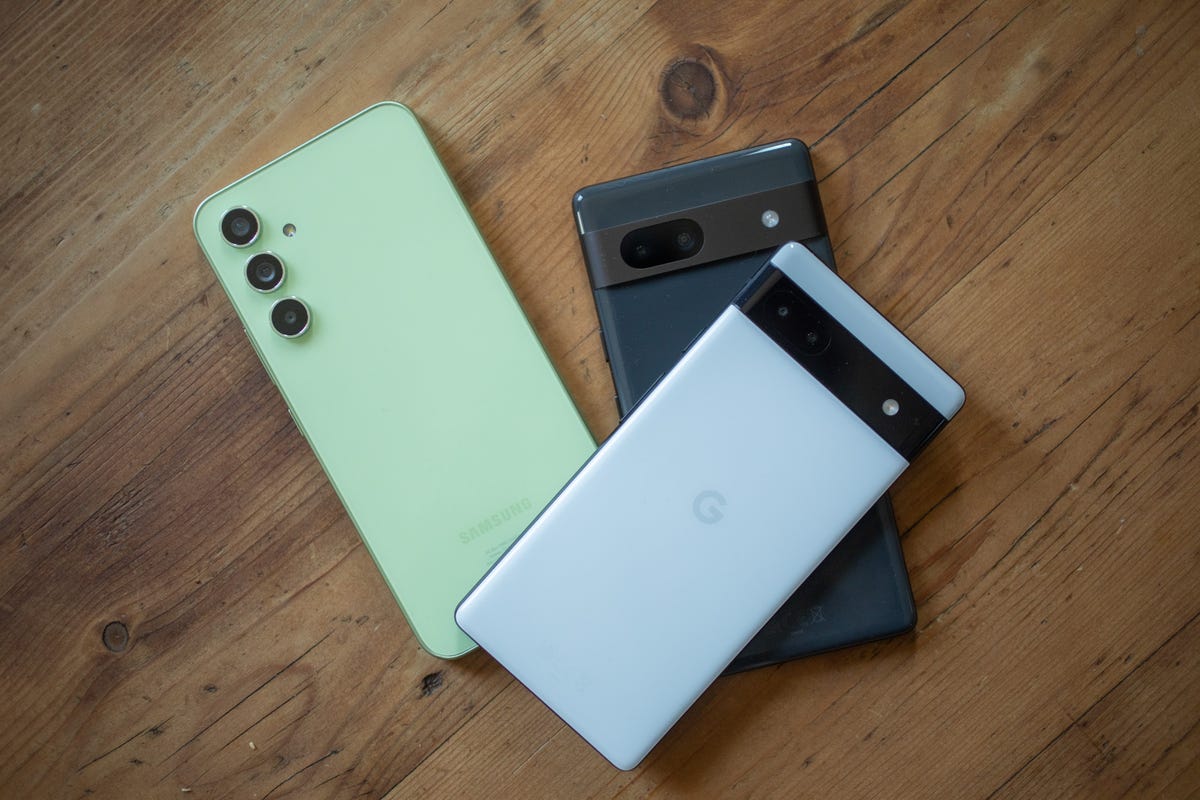
All three phones offer 128GB of storage at their base configurations, but only the Galaxy A54 lets you expand that with microSD cards.
Software, storage and extras
All three phones run the latest Android 13 software, and both Google and Samsung promise five years of security updates for their phones. As it was launched last year, this will mean that the Pixel 6A will be cut off from support in 2027 while both the Pixel 7A and Galaxy A54 will still be safe to use into 2028.
However, Samsung takes things a bit further, by offering an additional fourth generation of Android version updates over the Pixels, which is worth keeping in mind if you want to ensure you’re getting the most out of your phone for longer.
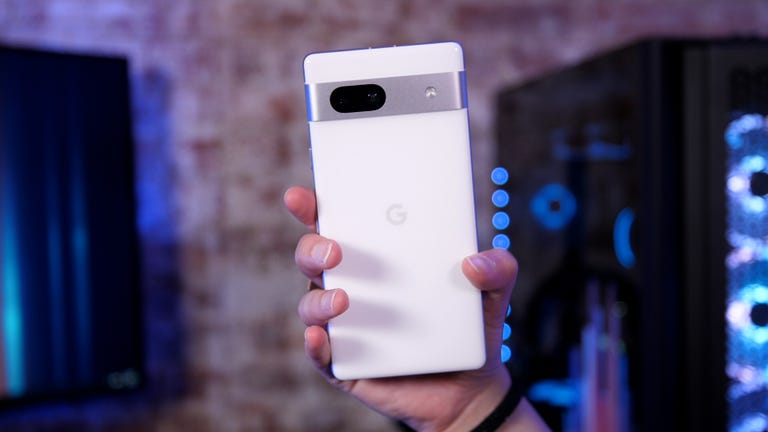
07:15
I much prefer the Pixel’s Android 13 interface though. It’s generally neater and easier to use than Samsung’s One UI skin. This is especially true with the A54, as Samsung preloaded a lot of third-party apps that make it feel cluttered and bloated.
While all three phones have base storage of 128GB, the A54 has an ace up its sleeve; it’s one of the last remaining phones that offers expandable storage with microSD cards. It supports cards of up to 1TB, and with a 128GB card costing only $12, you can essentially double the storage of the phone, providing tons of room for photos, videos and apps.
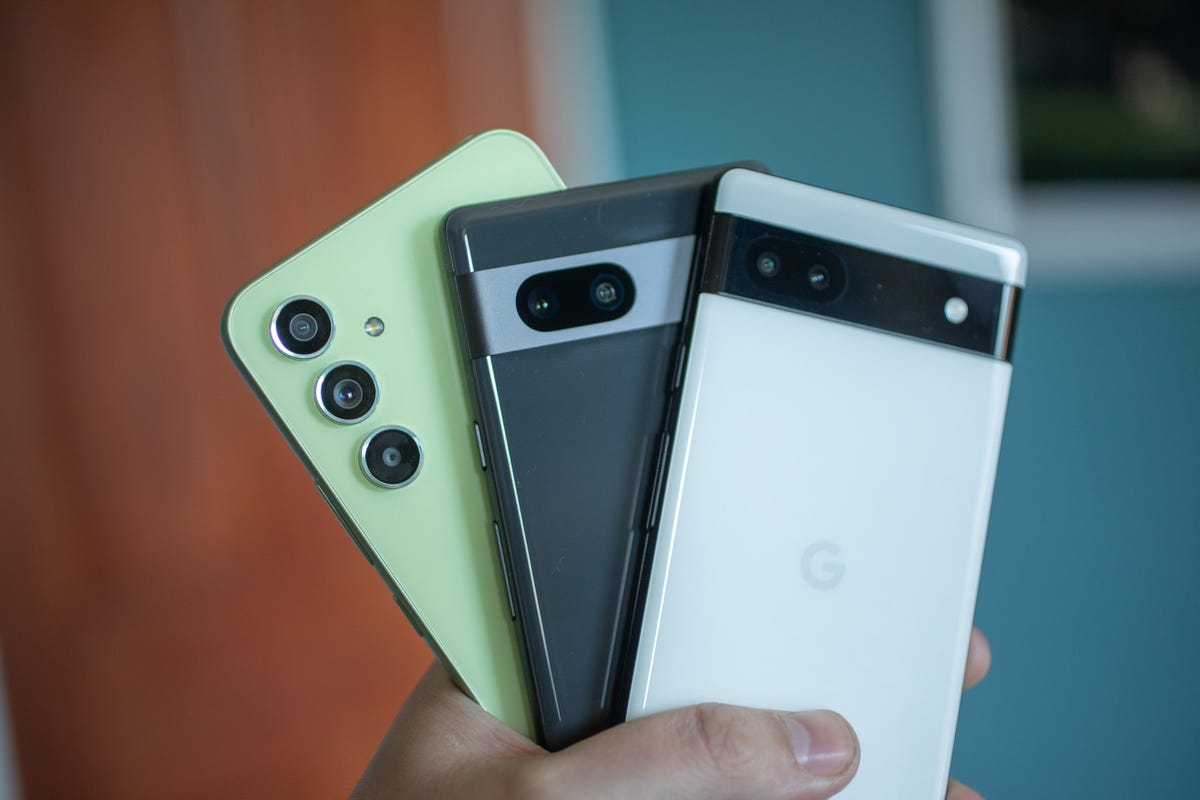
The A54’s additional macro lens is pretty pointless.
Which should you buy?
Samsung’s Galaxy A54 5G might have longer software support and expandable storage, but it falls behind both Pixel phones in most other respects. The cameras, user interface, processor performance and battery life is better on the Pixel 6A and 7A and either of those phones is where my money would go.
Deciding between the two Pixels is trickier, however. The 6A is incredibly cheap yet still offers excellent performance for all your daily needs and packs a great camera. If you’re looking for the best phone that also leaves the most money in your bank, then the older 6A is the one for you.
But the Pixel 7A’s camera is better and it includes other more recent features like wireless charging, face unlock, and as the more recent phone, it’ll receive software updates for longer. But those are expensive extras, given its $150 bigger price tag over the 6A.
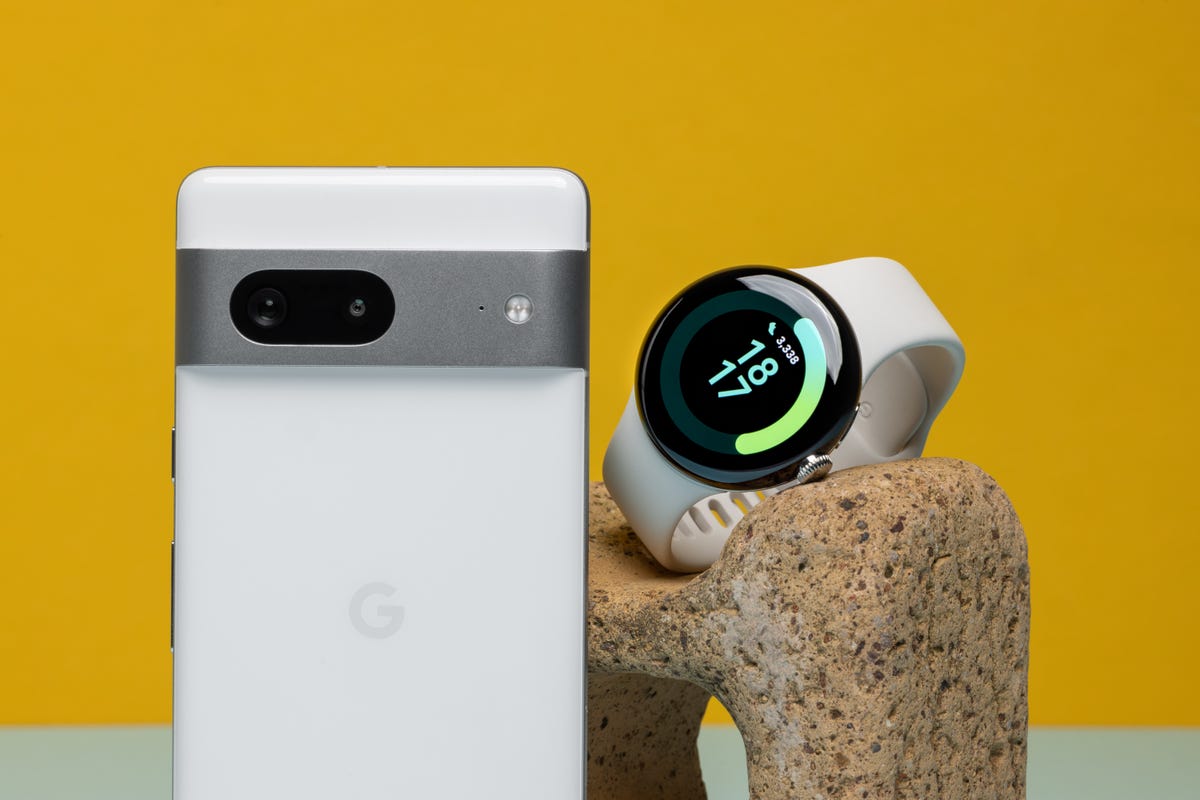
The Pixel 7 (seen here with the Pixel Watch) is still great, but the new Pixel 7A is the better buy.
What about the Pixel 7?
The Pixel 7 is Google’s lower-end flagship that offers a similar set of specs to the Pixel 7A but costs $100 more. Though it’s a superb phone that earned a CNET Editors’ Choice Award, the arrival of the 7A has meant that it’s very difficult to justify spending the extra on the older model.
As CNET’s Lisa Eadicicco puts it: «After reviewing both phones, I’m convinced the Pixel 7A is the best value for most people.»
Technologies
Today’s NYT Connections Hints, Answers and Help for Jan. 7, #941
Here are some hints and the answers for the NYT Connections puzzle for Jan. 7, #941
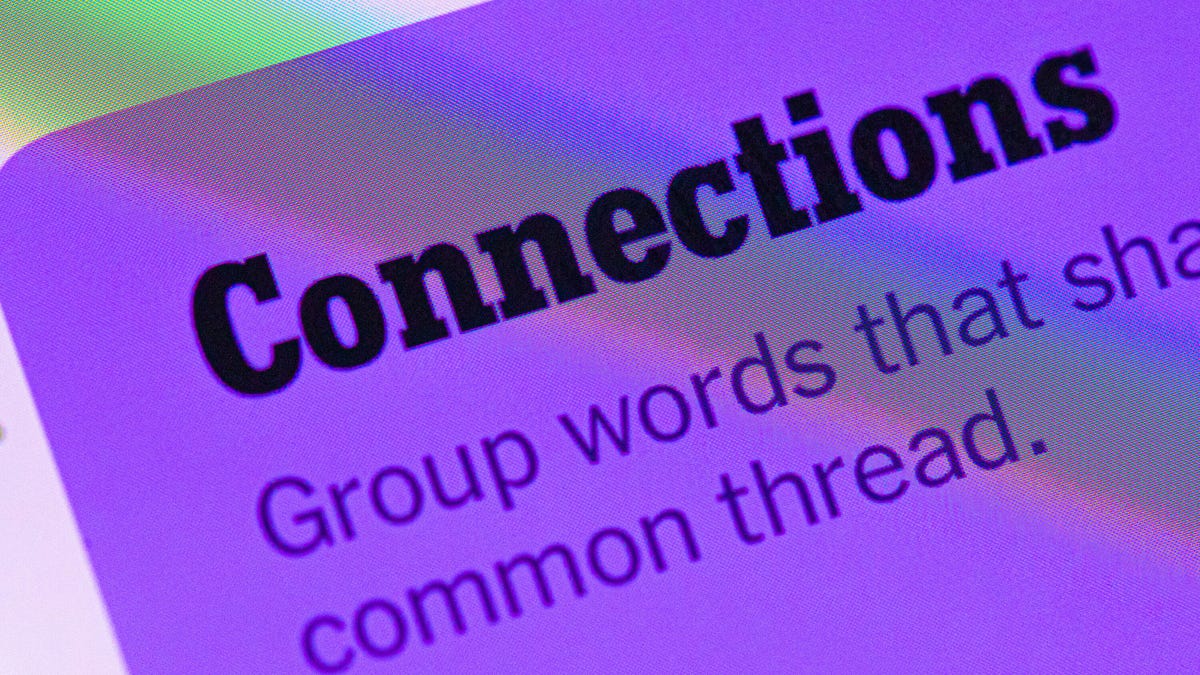
Looking for the most recent Connections answers? Click here for today’s Connections hints, as well as our daily answers and hints for The New York Times Mini Crossword, Wordle, Connections: Sports Edition and Strands puzzles.
Today’s NYT Connections puzzle is rather tricky. The purple category is especially mystifying. Read on for clues and today’s Connections answers.
The Times has a Connections Bot, like the one for Wordle. Go there after you play to receive a numeric score and to have the program analyze your answers. Players who are registered with the Times Games section can now nerd out by following their progress, including the number of puzzles completed, win rate, number of times they nabbed a perfect score and their win streak.
Read more: Hints, Tips and Strategies to Help You Win at NYT Connections Every Time
Hints for today’s Connections groups
Here are four hints for the groupings in today’s Connections puzzle, ranked from the easiest yellow group to the tough (and sometimes bizarre) purple group.
Yellow group hint: Lookalikes.
Green group hint: Part of something.
Blue group hint: National symbol.
Purple group hint: Squish down.
Answers for today’s Connections groups
Yellow group: Doppelgänger.
Green group: Portion.
Blue group: Common flag symbols.
Purple group: Pressed using a press.
Read more: Wordle Cheat Sheet: Here Are the Most Popular Letters Used in English Words
What are today’s Connections answers?
The yellow words in today’s Connections
The theme is doppelgänger. The four answers are clone, double, mirror and ringer.
The green words in today’s Connections
The theme is portion. The four answers are concern, interest, share and stake.
The blue words in today’s Connections
The theme is common flag symbols. The four answers are crescent, cross, star and stripe.
The purple words in today’s Connections
The theme is pressed using a press. The four answers are cider, garlic, trousers and wine.
Don’t miss any of our unbiased tech content and lab-based reviews. Add CNET as a preferred Google source.
Technologies
Today’s NYT Strands Hints, Answers and Help for Jan. 7 #675
Here are hints and answers for the NYT Strands puzzle for Jan. 7, No. 675.
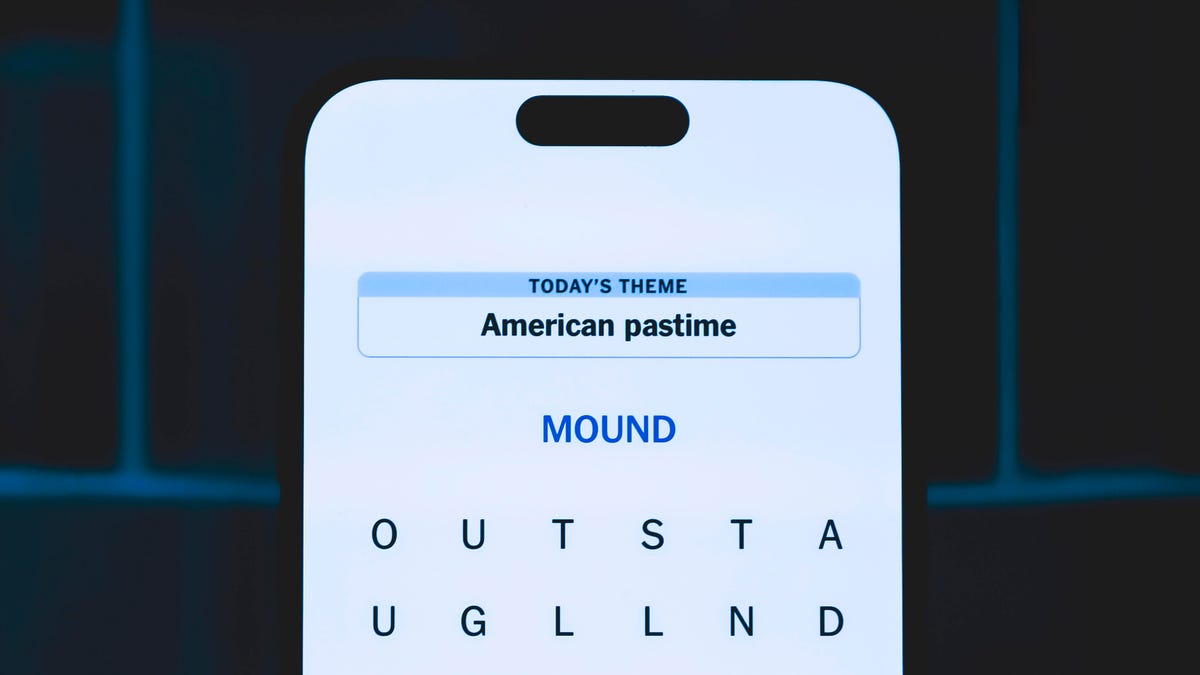
Looking for the most recent Strands answer? Click here for our daily Strands hints, as well as our daily answers and hints for The New York Times Mini Crossword, Wordle, Connections and Connections: Sports Edition puzzles.
Today’s NYT Strands puzzle is easier than some have been. Once you learn the topic, the words come pretty easily. But if you need hints and answers, read on.
I go into depth about the rules for Strands in this story.
If you’re looking for today’s Wordle, Connections and Mini Crossword answers, you can visit CNET’s NYT puzzle hints page.
Read more: NYT Connections Turns 1: These Are the 5 Toughest Puzzles So Far
Hint for today’s Strands puzzle
Today’s Strands theme is: Open wide.
If that doesn’t help you, here’s a clue: Brace face.
Clue words to unlock in-game hints
Your goal is to find hidden words that fit the puzzle’s theme. If you’re stuck, find any words you can. Every time you find three words of four letters or more, Strands will reveal one of the theme words. These are the words I used to get those hints, but any words of four or more letters that you find will work:
- MIST, SOIL, RICE, LICE, RUDE, LUDE, BRUSH, TOOT, RIDE, RIDER
Answers for today’s Strands puzzle
These are the answers that tie into the theme. The goal of the puzzle is to find them all, including the spangram, a theme word that reaches from one side of the puzzle to the other. When you have all of them (I originally thought there were always eight but learned that the number can vary), every letter on the board will be used. Here are the nonspangram answers:
- DRILL, FLOSS, MIRROR, FLUORIDE, TOOTHBRUSH
Today’s Strands spangram
Today’s Strands spangram is DENTISTSOFFICE. To find it, start with the D that’s five letters down on the far-left row, and wind up and then across.
Don’t miss any of our unbiased tech content and lab-based reviews. Add CNET as a preferred Google source.
Technologies
The Clicks Communicator Phone Is My Favorite Thing at CES
-

 Technologies3 года ago
Technologies3 года agoTech Companies Need to Be Held Accountable for Security, Experts Say
-

 Technologies3 года ago
Technologies3 года agoBest Handheld Game Console in 2023
-

 Technologies3 года ago
Technologies3 года agoTighten Up Your VR Game With the Best Head Straps for Quest 2
-

 Technologies4 года ago
Technologies4 года agoBlack Friday 2021: The best deals on TVs, headphones, kitchenware, and more
-

 Technologies4 года ago
Technologies4 года agoVerum, Wickr and Threema: next generation secured messengers
-

 Technologies4 года ago
Technologies4 года agoGoogle to require vaccinations as Silicon Valley rethinks return-to-office policies
-

 Technologies4 года ago
Technologies4 года agoOlivia Harlan Dekker for Verum Messenger
-

 Technologies4 года ago
Technologies4 года agoiPhone 13 event: How to watch Apple’s big announcement tomorrow
